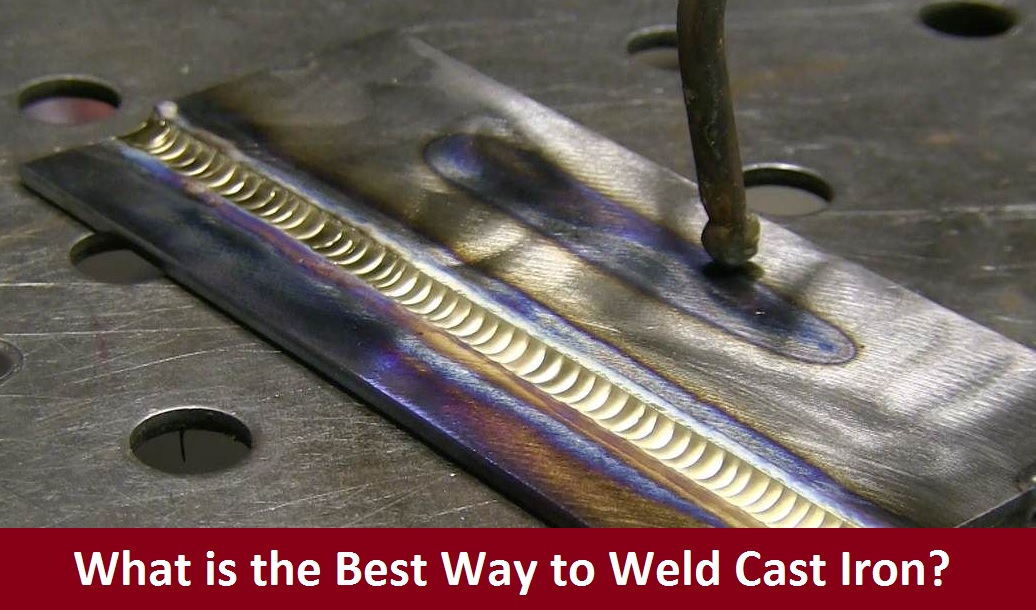Welding has a wide niche as it covers a lot of types, and this is also a fact that welding has so many challenges that a welder must know how to cope with them. Welding is not a one-time job because of the consistency it demands.
And still, if you have proper knowledge about welding, you may need the assistance of a professionally skilled person at some stage. This is a highly acceptable fact that among most welding processes, welding cast iron is the most difficult one.
It seems impossible to be done sometimes, but you will agree that it’s possible to perform. If you opt for a good way to weld cast iron, then it would be pretty darn easy. But remember, whatever technique you are going to choose, it should give accurate results because this is a bitter reality that welding cast iron usually causes cracks.
If you are confused about which method will make a perfect weld, then this blog post is for you, and you don’t need to scroll anywhere. We are going to tell you what is the best way to weld cast iron and you will witness later that the method will bring the most promising results.
So stay with us till the last line of this informational article!
What is Cast Iron Welding?
As a general introduction, cast iron refers to the blend of iron and carbon in varying proportions with the addition of sulfur and phosphorus, and some other elements, including molybdenum, silicon, copper, manganese, and nickel. To avoid cracking which is a common issue of welding cast iron, experts recommend using high-level phosphorus and sulfur.
People usually ask how the cracking is done during cast iron welding. The answer is quite simple to understand because cast iron contains 2 to 4% of carbon, which means the amount is higher than steel.
So, when the welding is done, carbon starts migrating into the weld metal, which ultimately causes brittleness, and then the post-weld cracking occurs.
Now, you are surely feeling curious about which method could help you in completing the process without cracks.
Let’s hop in further to explore it!
4 Methods of Welding Cast Iron
Now, you have to understand the difficulty of performing the job but remember the success ratio lies in the method you choose to weld the cast iron.
So, before making the first cast iron weld, you should have know-how about the techniques and methods that can make your task easier.
Scroll ahead to read 4 methods of welding cast iron!
Tungsten Inert Gas (TIG) Welding
To reduce the chances of cracks, a welder makes sure that the method he is going to use will minimize the carbon migration but remember, TIG welding is not the only ideal method of welding cast iron.
But this is an option you can avail of from the other three choices. Although TIG welding is not possible to perform by every welder because of the high cost still, it is the best way to produce clean and sturdy weld connections.
Stick Welding
As we know, arc welding or stick welding is one technique with plenty of electrodes. And choosing the right electrode or welding rod makes the job better with perfection. Usually, there are two types of welding rods i.e., ferronickel and pure nickel.
The ferronickel rods are considered best for cast iron welding into the steel, but if you need to weld softer metals then pure-nickel rods are good to use.
Moreover, the cast iron welding rods contain graphite-rich flux that ensures the minimum migration of carbon towards the heating zone.
Gas Welding
Among the common techniques of welding cast iron, gas welding is another way to complete the project.
The most common problem related to this technique is that the process can be done with a lower flame, and that’s why it gives slow results.
Although, with gas welding, carbon migration is not a big deal, but a welder will get entangled in the problem when large components are involved in the weld.
MIG (Metal Inert Gas) Welding
Last but not the least, MIG welding is another suggestion for performing cast iron welding. Although this is not the best way to make welds but a few tips can help you to perform the job with great results.
Have a look at them!
If the weld metal is not going to face high impacts or load, then you can bond the cast with the brazing wire.
Stainless steel is the best option for performing MIG welding if a welder wants to save money, but if there is no budget issue, then using a nickel wire will present the best results.
To make the weld mechanically strong, you can go for studding. Honestly, this gives magical results.
Now, you are gone through all the possible techniques of welding cast iron, so now, based on this information, you have to pick the best welding technique. We can’t tag a single method as you have to opt for it according to your preferences which include the size of the metal and the alloy you are going to weld.
Besides all the upper illustrated methods, here is another technique which is peening. Welders are used to performing this method to weld deformed beads.
In this technique, a ball-pen hammer is used to create strikes. These moderate strikes ultimately help to reduce the chances of cracks. But if you are interested in performing this method, then make sure the metal you are going to weld is ductile and not malleable.
Final Statement
Knowing about the process of welding cast iron is not everything because it won’t work until you learn the right way. Hopefully, you now know what is the best way to weld cast iron because among the several methods, we have tried our best to explain the common and trusted methods for cast iron welding. You can choose the preferred method and can successfully and effectively perform your job. Weld correctly!
